At Varese Retrocomputing 2024, an event dedicated to vintage technology enthusiasts, I had the honor of interviewing Sergio Gervasini of ESoCoP. In this fascinating conversation, Sergio takes us through the history of Steve Jobs' most iconic computers, exploring the technological and cultural evolution of machines that changed the world: Apple II, Macintosh and NeXT Cube.

Steve Jobs and Apple II: the home computing revolution
Launched in 1977, the Apple II was Apple's first major commercial success. Featuring an attractive design, a built-in keyboard, and support for graphics and sounds, it was a step up from its predecessor, the Apple I, which was a simple hobbyist's kit.
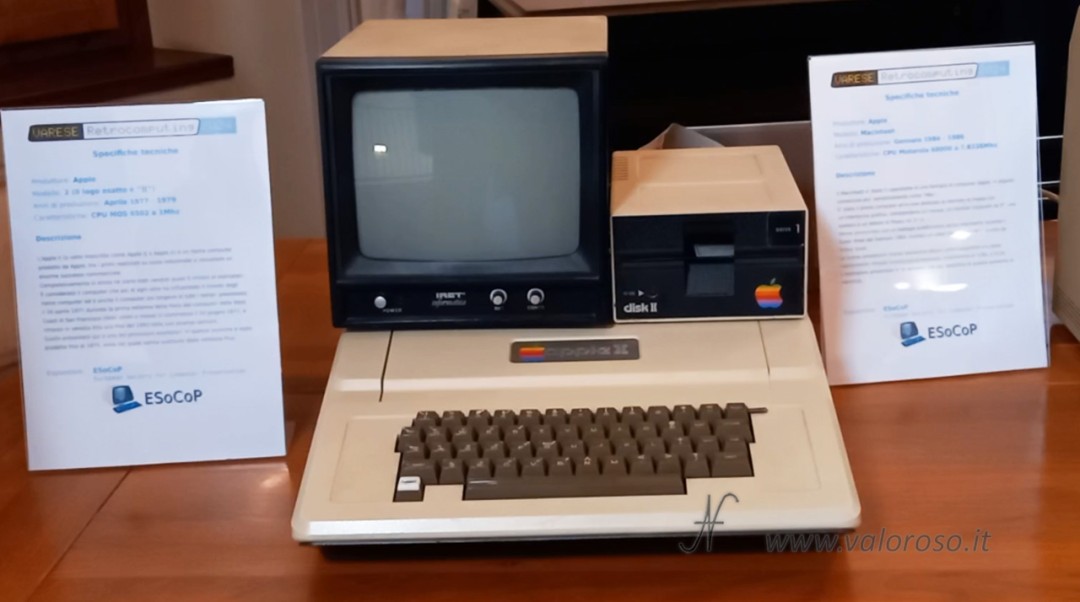
Sergio shows us an original model of the Apple II, part of a line that later included the Apple Europlus, the IIe and the Platinum, widespread until the 90s. This computer has made Apple a giant in the industry, thanks to its versatility and support for applications in the home, school and professional environments.
Macintosh: The Beginning of a New Era
With the Macintosh 128K, launched in 1984, Apple introduced the first computer with a graphical interface and mouse designed for the mass market. The machine, introduced with a legendary advertisement directed by Ridley Scott, stood out for its innovative design and cutting-edge technology for the time: 128 KB of RAM and a Motorola 68000 processor.
However, it soon became apparent that 128 KB of RAM was not enough to handle many applications. Apple made available an expansion to 512 KB of RAM, but the upgrade was not immediate: it required the replacement of the motherboard. To facilitate the operation, the company made a specific kit available at an advantageous price.

Today, the original 128K models, which have remained unchanged, are considered rare and coveted pieces by collectors of vintage computers.
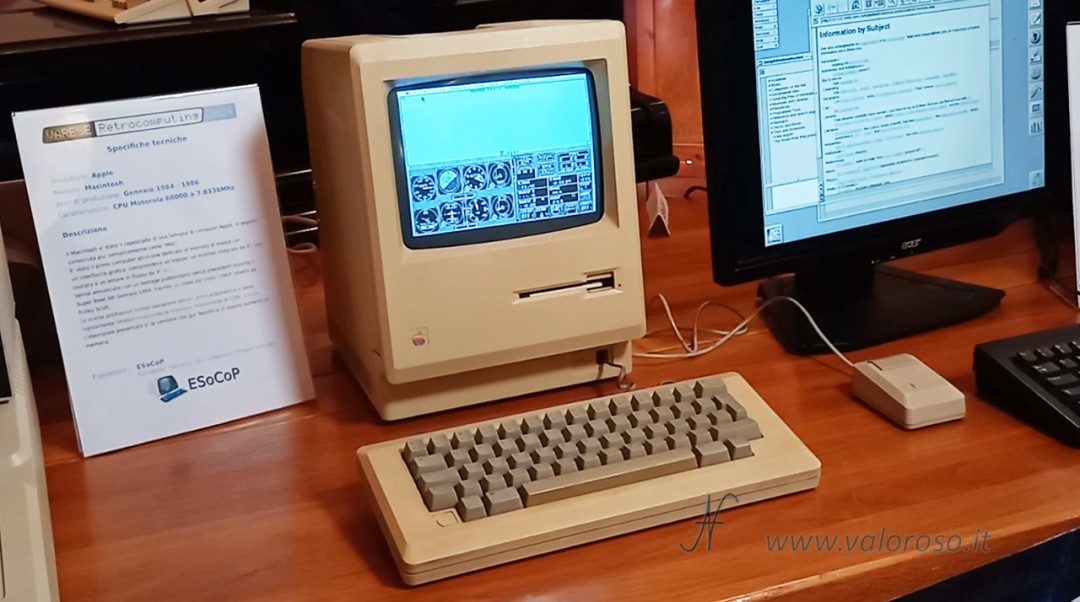
The Macintosh represented a radical change in the way computers were used, making computing more accessible even to those without technical skills. The windowed interface, drag-and-drop, and software such as MacWrite and MacPaint allowed users to create content with ease, revolutionizing the graphics and publishing industries.
In the computer shown by Sergio during the presentation, he was running Flight Simulator, a flight simulator produced by Microsoft and available on various platforms, including, in fact, Macintosh.
NeXT Cube and the origin of the Internet, when Steve Jobs was not at Apple
After his departure from Apple in 1985, Steve Jobs founded NeXT, a company that designed the revolutionary NeXT Cube. This computer, despite its limited success on the market, has become a fundamental piece of history: at CERN, Tim Berners-Lee used a NeXT Cube to create the first Internet page in history in 1990.

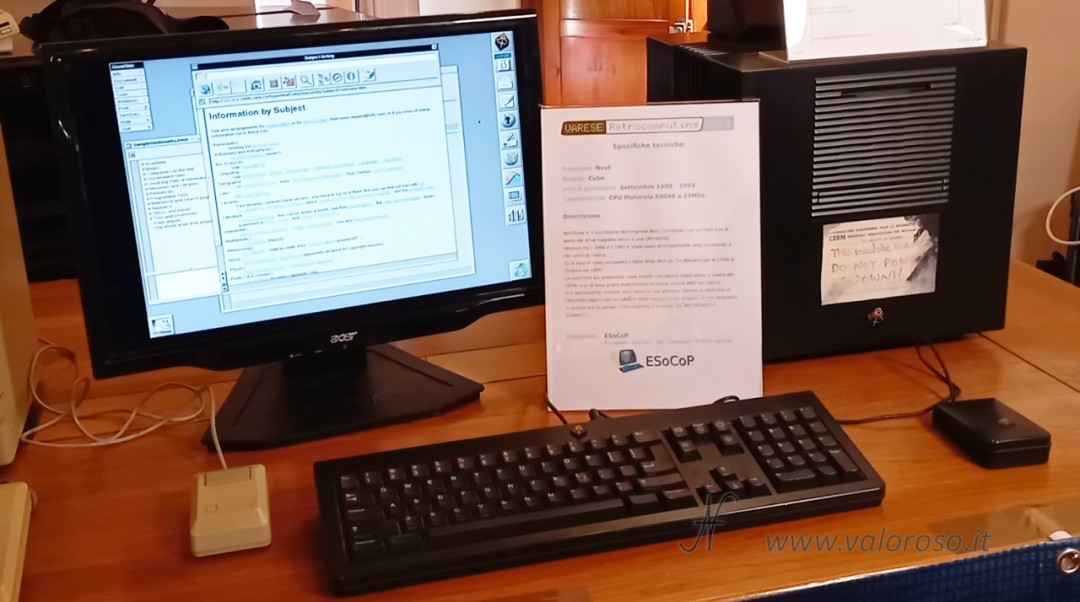
Sergio showed an accurate replica of this machine, complete with the famous "This machine is a server, do not power down!" sticker. The NeXT Cube was equipped with an advanced architecture for the time: a Motorola 68040 processor and the NeXTSTEP operating system.
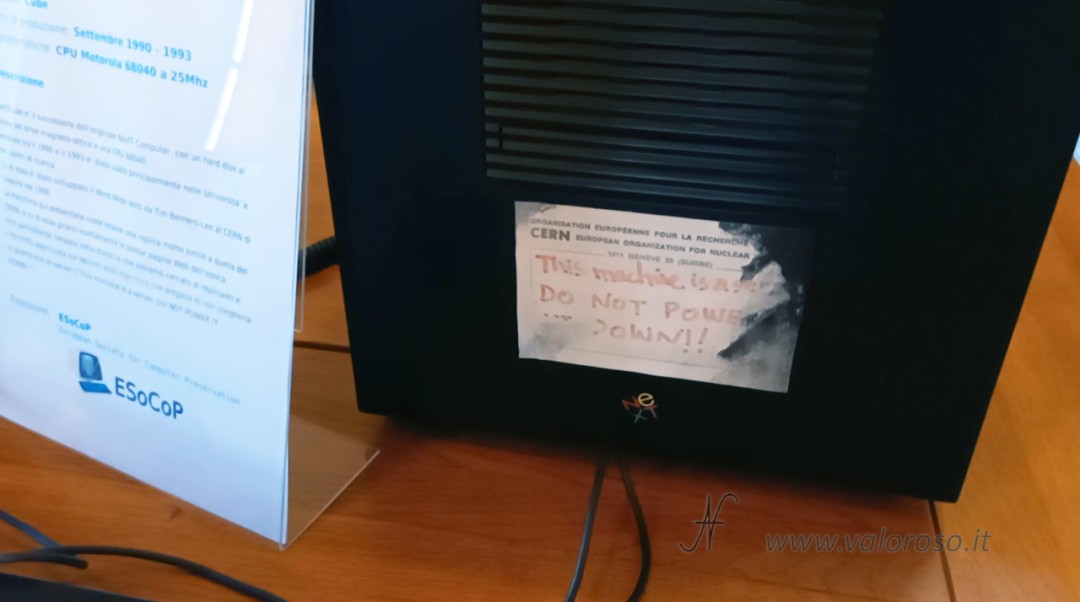
Subscribe to my channel and stay up to date
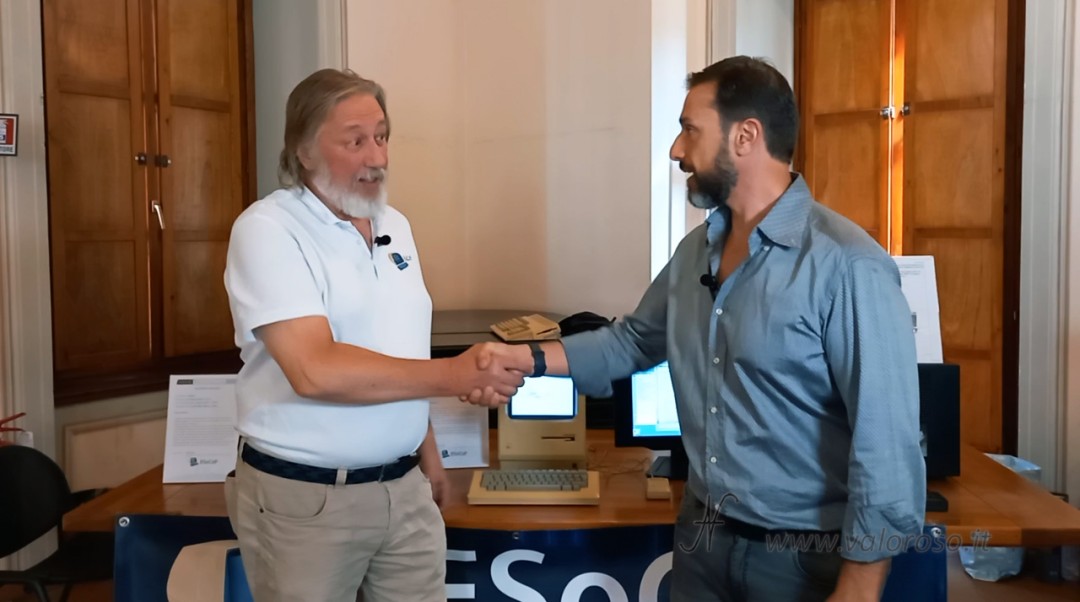
If you love retro computers and vintage electronics, don't miss the opportunity to subscribe to the YouTube channel (@ValorosoIT). I am also present on TikTok, Instagram, Facebook...